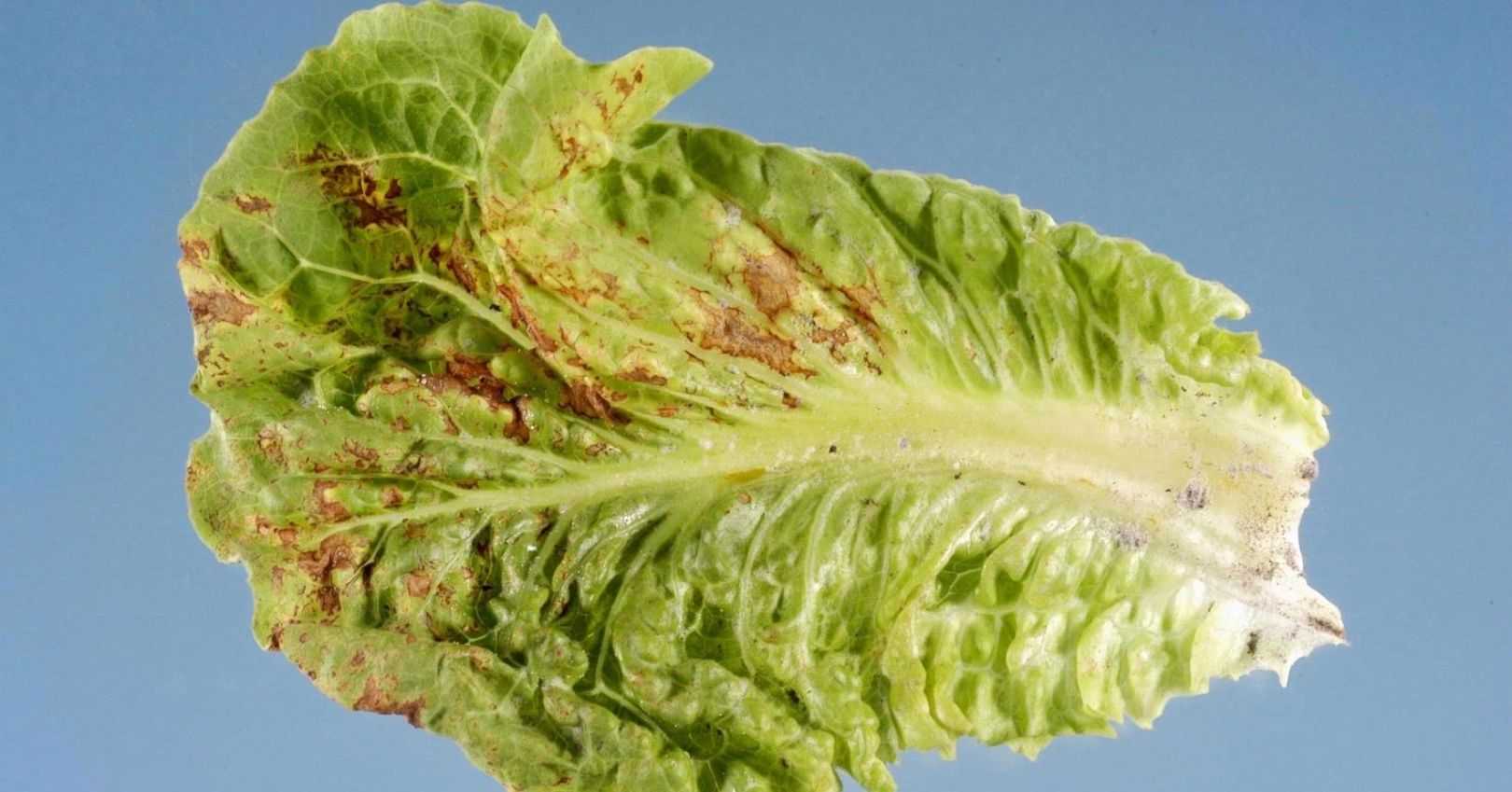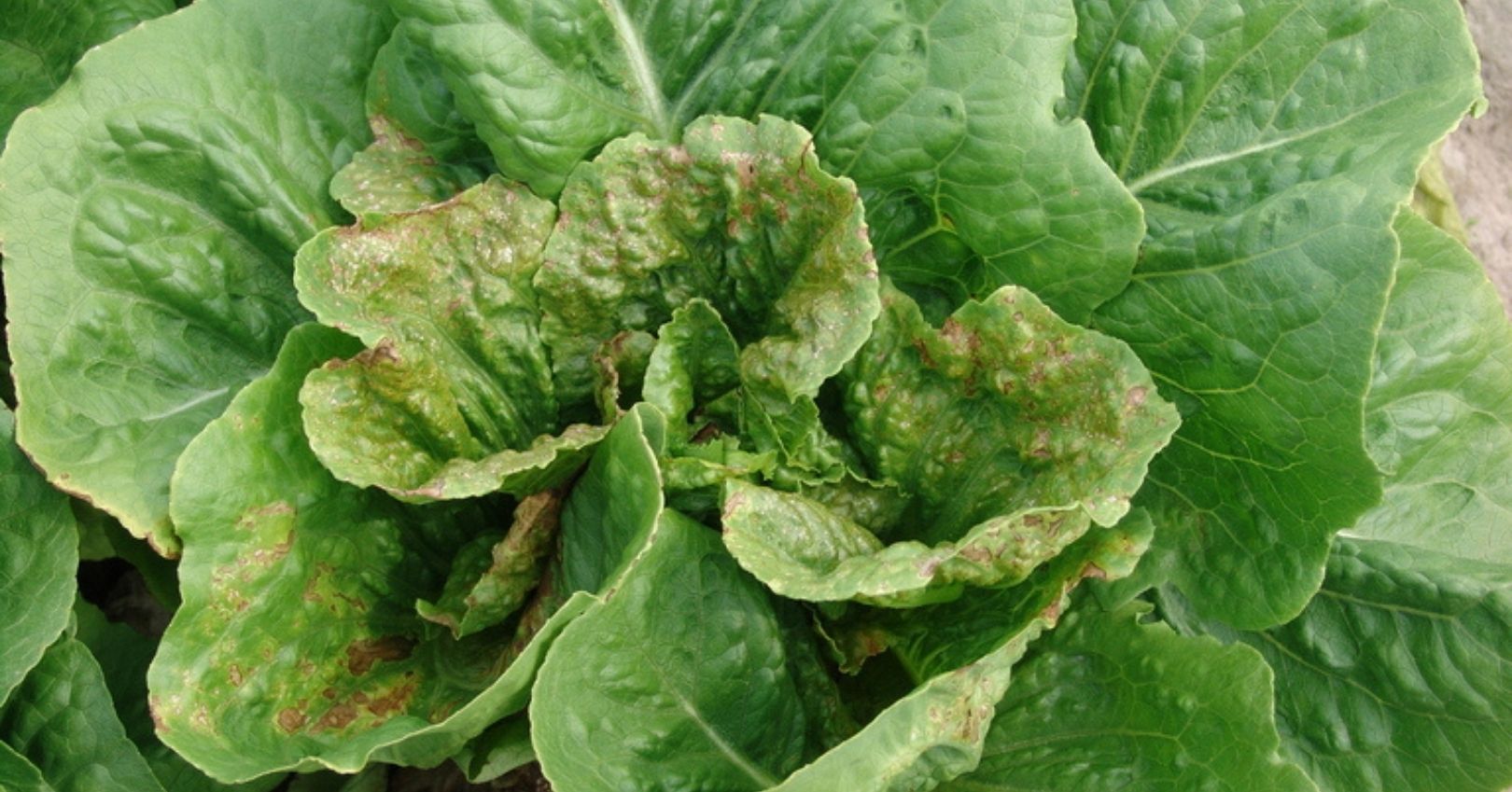Tomato Spotted Wilt Virus (TSWV)


Casual Agent
Tomato spotted wilt virus (TSWV) is transmitted by thrips. TSWV is frequently seen in Utah on tomatoes and peppers but thus far has not been confirmed on lettuce.
Symptoms
Symptoms on lettuce leaves are similar to symptoms on tomato leaves. Initially, infected leaves show bronzing and small brown lesions begin to develop along the veins. Lesions expand over time and may merge causing large necrotic areas on leaves. Lettuce plants may die if infected at a young age.
Disease Cycle
Plants are infected when thrips carrying the virus feed on a healthy plant depositing virus particles. The first symptoms often appear 7-10 days after infection. In some cases, the virus remains localized to the area where thrips feeding occured. However, plants often become systemically infected and the virus spreads from the original point of infection throughout the entire plant. Once a plant is infected there is no cure. If thrips are reproducing on the plant, it can serve as an inoculum source for neighboring plants.
Management
There is no cure for an infected plant. Diseased plants should be removed and destroyed. The best management strategy is to prevent an infection. There are no resistant lettuce varieties.
- Scout for and manage thrips populations.
- Remove and destroy infected plants.
- Plant lettuce upwind from susceptible crops when possible. Thrips are often blown to other plants by wind.
- Maintain good weed control. Weeds can be a host and reservoir of TSWV. Good weed control on field edges and in backyards can reduce the chance of infections.

